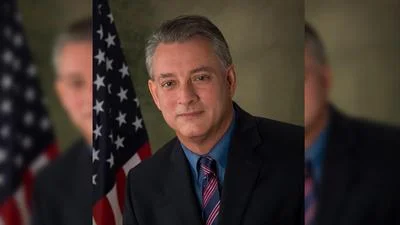Questions to and Answers from the Office to Monitor and Combat Trafficking in Persons (TIP Office) About its U.S.-Benin Child Protection Compact (CPC) Partnership Notice of Funding Opportunity
ELIGIBILITY QUESTIONS
Question: Who is eligible to apply for funding?
Answer: The TIP Office welcomes applications in response to this Notice of Funding Opportunity (NOFO) from:
1. S.-based and foreign-based non-profit organizations/non-government organizations (NGOs);
2. Public international organizations;
3. Private, public, or state institutions of higher education; and
4. For-profit organizations or businesses.
The TIP Office’s preference is to work with non-profit entities; however, there may be occasions when a for-profit entity is best suited. For-profit entities should be aware that their applications may be subject to additional review following the panel selection process, and that the Department of State generally prohibits profit in the form of program income under its assistance awards.
Question: Can multiple organizations submit one application?
Answer: Yes. Although not required, organizations are encouraged to apply as a consortium for this NOFO. If applying as a consortium, there must be ONE prime applicant that is clearly identified and other organizations can be sub-awardees.
FUNDING/APPLICATION PROCESS QUESTIONS
Question: How much funding does the TIP Office have for this NOFO?
Answer: This award will not exceed $10 million and up to $1 million of that total amount will be obligated by Sept. 30, 2021. All awards under this announcement are pending the availability of funds.
Question: What is the maximum number of awards?
Answer: The number of awards depends on the availability of funds and the quality of applications received.
Question: Where can I find the Notice of Funding Opportunity?
Answer: The funding opportunity is available on SAMS-Domestic ).
Question: What are the expected funding dates?
Answer: Subject to available funds, the TIP Office expects to award the funds to successful applicant(s) no later than October 2021.
Question: Is there a limit to the number of proposals that can be submitted by a single applicant?
Answer: Applicants may only submit one proposal in response to this NOFO.
Question: What should I do if I encounter difficulty using the SAMS-Domestic website?
Answer: Unfortunately, the TIP Office is unable to unlock SAMS-Domestic account or reset passwords. For assistance with SAMS-Domestic ) contact the ILMS Support Desk at 1-888-313-4567 (toll free for international callers) or submit a ticket using the ILMS Self Service Portal ). Please let us know if you have any questions by emailing JTIPGrants@state.gov.
Question: How do we request a DUNS number?
Answer: For information and assistance with DUNS numbers, please contact the Help Desk via phone at 866-705-5711 or via email at govt@dnb.com. In your message, provide your contact information and a brief description of the problems you are experiencing.
Question: May an organization apply to this NOFO if the organization is not physically present in Benin?
Answer: Yes, an organization may apply for this NOFO if they do not have a physical presence in Benin. However, the TIP Office’s STRONG preference for this NOFO is to award funds to an organization with an existing presence in-country and with partnerships with local civil society partners.
Question: If an organization proposes a partnership with another organization, do all parties need to obtain a DUNS number, or only the applicant?
Answer: For the purpose of filling out the SF 424s and submitting an application, the only DUNS number required is that of the applicant - the principle organization which is requesting funding. Organizations proposing partnership or sub-award agreements in their proposals are advised that their partners may obtain a valid DUNS number in anticipation of selection for funding, as this information may be required for sub-award agreements.
Question: Are applicants required to submit a hard copy original signature with their proposal via mail?
Answer: No, only an electronic signature submitted via SAMS-Domestic is required. No applications or supplemental documents are permitted to be submitted or will be accepted via mail.
APPLICATION CONTENT QUESTIONS
Question: Are organizations eligible to receive indirect funds?
Answer: Regarding indirect costs, organizations without a Negotiated Indirect Cost Recovery Agreement (NICRA) agreement may account for a maximum of ten percent (10%) of these expenses as indirect costs when submitting a budget; please note this 10% de minumus rate is in accordance with 2 CFR 200.414(f). For organizations that do not have a NICRA and elect not to use the de minumus rate, identified “overhead costs" must be charged as direct costs. Organizations with NICRA agreements may account for indirect costs as a lump sum for the relevant percentage of funding as permitted by the NICRA.
Question: If an applicant proposes a partnership with government, civil society, another NGO, or a PIO does the partnership agreement have to be finalized or in writing at the time of the application?
Answer: The TIP Office prefers that partnerships are finalized before the application is submitted and that documentation of the partnership is included and referenced in the proposal. However, this is not a requirement and partnerships need not be formalized at the time the proposal is submitted. Please note that the TIP Office may require that the partnership is formalized before funds are awarded.
Question: Who should be listed as the authorized certifying official on the SF-424B?
Answer: The “certifying official" is the person within your organization who can / will sign the grant award if an award is made. This could be the organization’s director, a project manager, or grants coordinator, for example. This is also the only point of contact who will receive information regarding the status of the application from the TIP Office.
Question: Can you provide more guidance on partnerships v. sub-awards and what is required?
Answer: The applicant may designate one or more organizations as a sub-recipient. For the purposes of this funding opportunity, a sub-recipient is any organization that would receive sub-award funding from a successful applicant to help the applicant organization implement project activities. All mandatory terms and conditions for a successful applicant also apply to any sub-awards. The TIP Office recognizes that applicants may plan for sub-awards that are not yet finalized prior to proposal submission. The TIP Office also recognizes that organizations may work with other organizations or stakeholders in a way that may not rise to a sub-award agreement - in this instance the relationship would be a partnership. If selected for funding, the TIP Office will work closely with applicants to determine which relationships rise to the level of sub-awards.
Question: Can you further clarify when Letters of Intent are required and from whom?
Answer: Please note that letters of Intent to Cooperate (Annex K, and page 52 in the Guidelines/Program Design Standards), are only required for those applicants proposing to partner with one or more stakeholders that have been formalized at the time of application submission. Should Letters of Intent be required to do work in country from various government ministries, then these should be obtained in advance of an organization receiving an award.
Question: We understand the TIP Office wants our theory of change included in the body of the proposal template, rather than as an appendix. Does your office have a preference for whether the Theory of Change be explained through a diagram image or through narrative?
Answer: Applicants should include the theory of change as an “if, then" statement in the proposal narrative template. The TIP Office will not accept a diagram/visual within the actual proposal narrative. Applicants are required to submit a Theory of Change diagram/visual of their choice, no longer than one page, as Annex A. Please refer to the NOFO Guidelines/Program Design Standards for further guidance in developing a theory of change, and to better understand the TIP Office’s expectations of a theory of change submission.
Question: What goes in the “Progress" column in the “Results Performance Monitoring Plan" (Annex B?)
Answer: The progress column within the RPM will be used by the successful applicants to report indicator results on a quarterly basis.
Question: May applicants submit additional documents to the project narrative, in addition to the required templates and documents outlined in the NOFO?
Answer: No, applicants may only submit required annexes, as well as the project narrative. Any additional documents uploaded outside of what is specified in the NOFO will result in failure of the organization during technical review.
Question: Can you clarify about the page limit and character limit for the Narrative?
Answer: Please refer to the NOFO regarding the character limit for the Narrative. Applicants are required to use the Narrative Template provided within SAMS-D, which limits the number of characters. The template limit of no more than 30,000 characters allows for approximately 10 pages.
Question: How are the use of graphics (e.g., flow charts) in the Narrative counted against the overall character limit?
Answer: All charts applicants include in the Narrative count towards the character limit. Please do not produce graphics outside of these platforms and include them in the Narrative. For all graphics included in the Narrative, applicants should produce / create them using either Microsoft Word or Microsoft Excel.
Question: May an applicant include footnotes in the project narrative?
Answer: Yes, an applicant may include footnotes within the project narrative. However, the footnotes will be included within the character count limit.
COMPETITIVE REVIEW QUESTIONS
Question: How does the TIP Office decide which proposal(s) to fund?
Answer: Following the submission, all proposals will be screened to determine whether they meet the technical requirements stated in this announcement. As a reminder, the TIP Office will only consider proposals that meet the very specific requirements outlined in the NOFO and Guidelines/Program Design Standards. Following the technical review, a formal / substantive content review of each full proposal that passes the technical review will commence. An intra- and interagency panel will review proposals for funding consideration. The panel will consider each proposal’s merits as well as applicable limitations on U.S. foreign assistance. Panel recommendations will be presented to the TIP Office’s Ambassador-at-Large or Acting Director for consideration.
Question: Where may I find additional advice about preparing the full proposal application?
Answer: The TIP Office must ensure a fair, transparent, competitive grants process. No one from the TIP Office or other Department of State personnel, including Embassy personnel, may advise applicants on the content of its application. Persons with additional questions about the requirements of the solicitation may contact JTIPGrants@state.gov.
Source: U.S Department of State, Bureau of Oceans and International Environmental and Scientific Affairs








